UPSC Daily Current Affairs: 3rd November 2024 | Current Affairs & Hindu Analysis: Daily, Weekly & Monthly PDF Download
GS3/Environment
Wildlife Crime Control Bureau
Source: Indian Express
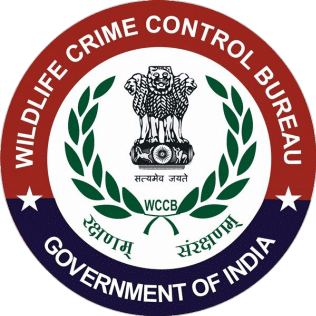
Why in news?
The Wildlife Crime Control Bureau (WCCB) of the Ministry of Environment, Forest and Climate Change has formed a team to investigate the deaths of ten elephants in the Bandhavgarh Tiger Reserve in Madhya Pradesh.
Here are key details about the Wildlife Crime Control Bureau:
- About WCCB: It is a statutory, multi-disciplinary organization created by the Government of India to tackle organized wildlife crime within the nation.
- Formation: The bureau was established through amendments to the Wild Life (Protection) Act, 1972.
- Mandate:According to the Wild Life (Protection) Act, 1972, WCCB has several key responsibilities:
- Gather and compile intelligence related to organized wildlife crime, sharing this with state and other enforcement agencies for prompt action to catch offenders.
- Establish a centralized database for wildlife crime information.
- Support foreign authorities and international organizations to enhance coordination and global efforts in wildlife crime control.
- Build the capacity of wildlife crime enforcement agencies to conduct scientific and professional investigations into wildlife offenses, aiding state governments in achieving successful prosecutions.
- Advise the Government of India on wildlife crime issues with national and international significance, including relevant policies and laws.
- Assist Customs authorities in inspecting shipments of flora and fauna in accordance with the Wild Life Protection Act, CITES, and EXIM Policy.
- Develop an online Wildlife Crime Database Management System for real-time data analysis to track crime trends and create effective preventive measures.
- Operational Success: The database has been instrumental in analyzing crime trends, aiding in preventive strategies, and supporting successful operations like Operation SAVE KURMA, THUNDERBIRD, WILDNET, LESKNOW, BIRBIL, THUNDERSTORM, and LESKNOW-II.
- Nodal Ministry: The Ministry of Environment, Forest and Climate Change is the overseeing body.
- Headquarters: Located in New Delhi.
GS1/Indian Society
Thadou Tribe
Source: Indian Express
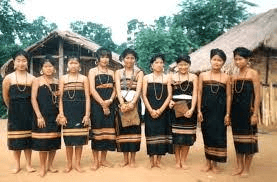
Why in News?
Recently, the organizers of the Thadou Convention held in Assam's Guwahati event released a 10-point declaration to protect the Thadou tribe's distinct identity and heritage amid the ethnic crisis in Manipur.
About Thadou Tribe:
- The Thadou are an indigenous group residing in the hilly areas bordering the Imphal Valley in Manipur, a northeastern state of India.
- They are also known by various names including Chillya, Kuki, Kukihin, Teizang, and Theruvan.
- Language: The Thadou people speak Chin and Thado, which are part of the Tibeto-Burman languages within the Sino-Tibetan language family.
Village Structure:
- The largest house in a Thadou village typically belongs to the village chief.
- In front of the chief's house, there is a platform where men convene to have discussions and mediate disputes.
Economy:
- The Thadou engage in subsistence-based activities such as raising animals, cultivating crops, hunting, and fishing.
- Jhum or slash-and-burn agriculture is the primary farming method practiced by the community.
Religious Beliefs:
- The Thadou people hold a belief in a deity named Pathen, who is thought to be the creator of all things and the ruler of the universe.
- They perform sacrifices to Pathen, seeking health and assistance during difficult times.
Festival:
- The Hun-Thadou cultural festival is an important annual event celebrated by the community, marking the arrival of the New Year.
GS3/Environment
Tamil Nadu bracing for heatwaves
Source: The Hindu
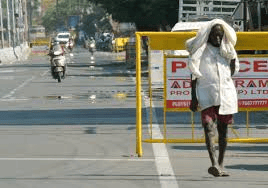
Why in news?
The Tamil Nadu government has officially recognized heatwaves as a State-specific disaster, which allows for the implementation of relief measures for those impacted and compensation for families affected by heat-related fatalities. Immediate actions will be taken to manage the heat, utilizing funds from the State Disaster Response Fund.
The World Meteorological Organization has declared 2023 as the hottest year recorded, with an increase in heatwave occurrences linked to human-induced climate change, as highlighted in the IPCC’s Sixth Assessment Report. In India, the intensification of heatwaves has been associated with severe health consequences. A study published in Environment International showed a rise in both frequency and severity of heatwaves in recent decades, including:
- 1998: A severe two-week heatwave, deemed the worst in half a century.
- 1999: An unprecedented heat event in April, with temperatures exceeding 40°C for over 14 consecutive days.
- 2003: A heatwave that resulted in over 3,000 deaths in Andhra Pradesh.
- 2010: A heatwave in Ahmedabad caused approximately 1,300 fatalities.
- 2016, 2018, 2019, and 2023: Extreme heatwaves affecting various parts of India.
In May 2024, a severe heatwave impacted the region, with Churu, Rajasthan, recording a temperature of 50.5°C, marking the highest temperature in eight years. This heatwave led to 219 deaths and over 25,000 cases of heatstroke, affecting individuals across both plains and hilly areas.
Heat waves
A heatwave is characterized by a prolonged period of significantly high temperatures, exceeding the typical maximum temperature for a region.
- In India, heatwaves usually occur from March to June, and occasionally extend into July.
- Annually, the northern regions experience an average of five to six heatwave events.
- A heatwave is defined when a monitoring station records a maximum temperature of:
- ≥ 40°C for plains
- ≥ 30°C for hilly areas
- Based on the departure from normal temperatures:
- Heat Wave: Departure from normal is between 4.5°C to 6.4°C;
- Severe Heat Wave: Departure from normal exceeds 6.4°C.
- Based on actual maximum temperatures:
- Heat Wave: Actual maximum temperature ≥ 45°C;
- Severe Heat Wave: Actual maximum temperature ≥ 47°C.
Health Impacts of Extreme Heat
Rapid increases in temperature can overwhelm the body's ability to maintain thermal balance, leading to a series of health issues, including:
- Heat cramps
- Heat exhaustion
- Heat stroke
- Hyperthermia
Extended exposure to extreme heat can exacerbate pre-existing health conditions such as renal, cardiovascular, and pulmonary diseases. Vulnerable groups including children, the elderly, pregnant women, and outdoor laborers are at heightened risk. Additionally, extreme heat can adversely affect early childhood development, impacting learning, sleep patterns, and mental health.
The wet bulb temperature represents the lowest temperature achievable through evaporative cooling, such as sweating, and assesses the combined effects of heat and humidity. When this threshold is surpassed, the body struggles to cool itself, increasing the risk of heat stroke or death. This concern is particularly acute in humid areas like India, which has extensive coastlines.
Research indicates that a wet bulb temperature exceeding 35°C for prolonged periods poses a universal limit for heat stress, hindering heat dissipation and leading to hyperthermia.
Recommended Government Actions
- Equip health facilities with essential supplies, such as oral rehydration solutions (ORS) and necessary medications.
- Provide access to water and shaded areas for outdoor workers to mitigate heat exposure.
- Modify work schedules to reduce outdoor activity during peak heat hours.
- Long-term strategies should focus on addressing the root causes of climate change and enhancing infrastructure to reduce vulnerability, particularly in lower-income communities.
GS2/International Relations
Exercise VAJRA PRAHAR 2024
Source: Indian Express

Why in News?
Recently, the Indian Army contingent departed for the 15th edition of India- US joint Special Forces Exercise VAJRA PRAHAR.
About Exercise VAJRA PRAHAR 2024:
- This exercise is a collaborative military operation between the Indian Army and the US Army.
- It is scheduled to take place at the Orchard Combat Training Centre located in Idaho, USA.
- The Indian Army will be represented by Special Forces units, while the US Army will send their Green Berets.
Aims of Exercise VAJRA PRAHAR:
- The primary goal is to enhance military cooperation between India and the US.
- It focuses on improving interoperability, joint operations, and the exchange of special operations tactics.
- The exercise aims to develop combined capabilities for conducting joint Special Forces Operations, particularly in desert and semi-desert terrains.
Training Focus Areas:
- Participants will engage in rigorous physical training and joint tactical drills.
- Key drills will include:
- Planning a Joint Team Mission
- Conducting Reconnaissance Missions
- Utilizing Unmanned Aerial Systems
- Executing Special Operations
- Coordinating actions of Joint Terminal Attack Controllers
- Implementing Psychological Warfare strategies during Special Operations
Significance of the Exercise:
- This exercise provides an opportunity for both nations to share effective practices and experiences in joint Special Forces operations.
- It fosters the development of interoperability, camaraderie, and mutual respect among the soldiers of India and the US.
GS3/Environment
What are the Key Takeaways from COP-16?
Source: The Hindu
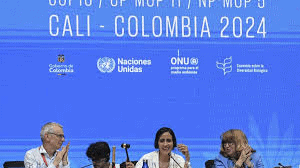
Why in news?
The 16th meeting of the Convention on Biological Diversity (CBD) was held in Cali, Colombia, gathering around 190 countries to further global biodiversity conservation efforts. This conference built upon the landmark agreements made at the previous meeting in Montreal, Canada, in 2022. The main objective was to advance the Kunming-Montreal Global Biodiversity Framework (KMGBF) and ensure the implementation of key biodiversity targets for the decade leading to 2030.
About the Convention (Key Goals, Decisions & Discussions, etc.)
- The KMGBF aims to protect 30% of land and marine areas by 2030, as established in the 2022 Montreal meeting's 30-by-30 agreement.
- Currently, only about 17% of land and 10% of marine areas are protected worldwide.
- 23 action-oriented global targets for biodiversity conservation were identified, including:
- Reducing Invasive Species: A goal to halve the introduction of invasive alien species by 2030 and mitigate their effects.
- Addressing Pollution: Aiming to reduce pollution across all sources to acceptable levels by 2030.
- Benefit-Sharing Mechanism: Establishing a system to ensure fair sharing of benefits derived from genetic resources and digital sequence information.
- Integrating Biodiversity into Development: Ensuring that biodiversity is considered in national policies and development plans.
- Implementing these targets necessitates significant financial resources, with estimates suggesting a need for around $200 billion annually, although only a small portion of this amount has been pledged.
Decisions and Discussions at COP-16:
- A subsidiary body was created to include indigenous communities in biodiversity discussions, acknowledging their critical role in conservation.
- Digital Sequence Information (DSI) was a prominent topic, focusing on fair benefit-sharing from products developed using genetic materials. However, a comprehensive agreement on the framework was not reached.
- Agreements were adopted addressing the relationship between biodiversity and climate change, mainstreaming biodiversity into various sectors, managing invasive species, and providing technical support for KMGBF implementation.
India’s Contribution to COP-16:
- India was represented by a delegation led by the Minister of State for Environment, Kirti Vardhan Singh, and presented an updated biodiversity action plan.
- Budget Commitment: India plans to allocate approximately ₹81,664 crore for biodiversity and conservation initiatives from 2025 to 2030.
- From 2018 to 2022, India invested ₹32,207 crore in conservation efforts through central government funding and allocations to various ministries.
- Call for International Finance: Indian officials emphasized the necessity of global funding to achieve ambitious biodiversity targets, particularly highlighted in Target 19 of the KMGBF, which aims to mobilize $200 billion annually, including $30 billion from international sources.
- Biodiversity Initiatives: India highlighted its establishment of the International Big Cat Alliance to protect major big cat species, which are indicators of healthy ecosystems. Additionally, India expanded its Ramsar sites (wetlands of international importance) from 26 in 2014 to 85 and aims to reach 100 soon.
Significance and Future Implications:
- The COP-16 conference underscores the global commitment to biodiversity conservation, with specific targets addressing habitat loss, pollution, and climate change.
- The inclusion of indigenous communities and creation of benefit-sharing frameworks for genetic resources mark significant progress towards equitable conservation efforts.
- However, the success of these initiatives hinges on obtaining adequate funding, which remains a challenge.
- India's active participation and substantial budget commitments reflect its dedication to biodiversity conservation, emphasizing the need for collaborative international support to achieve the KMGBF goals by 2030.
GS2/Polity
Panel examining SC tag for all Dalit converts gets one-year extension
Source: The Hindu

Why in news?
The Commission of Inquiry, which is chaired by former Chief Justice of India Justice K.G. Balakrishnan, has been granted an additional year to complete its report regarding the possibility of granting Scheduled Caste (SC) status to Dalit converts. Initially tasked with submitting its findings by October 10, 2024, the new deadline is now set for October 10, 2025. This extension was provided by the Ministry of Social Justice and Empowerment after the commission requested more time to finalize its conclusions and recommendations.
- The commission faced initial delays due to logistical challenges, including the absence of a permanent office, an official address, and sufficient staffing during the early months. Consequently, field visits essential for collecting data and gauging public opinion were postponed until August 2023.
- Currently, the Constitution (Scheduled Castes) Order, 1950, states that individuals who follow religions other than Hinduism, Buddhism, or Sikhism cannot be recognized as Scheduled Castes. This order was first issued to classify only Hindus, but was later modified to include Sikhs and Buddhists. There have been petitions filed in the Supreme Court requesting the inclusion of Dalit Christians and Dalit Muslims, advocating for the removal of religious criteria for SC inclusion.
- In August 2022, the Supreme Court instructed the Centre to clarify its stance on this matter. Following this, in October 2022, the Union Ministry of Social Justice & Empowerment announced the formation of a three-member Commission to investigate the issue. The Commission, which is led by Justice K.G. Balakrishnan, has specific objectives to explore.
Objectives of the Commission
- To assess whether Scheduled Caste status can be granted to Dalits who have converted to religions outside of Sikhism or Buddhism.
- To investigate the changes that SC individuals experience after converting to another religion and how these changes impact their classification as SCs.
- To explore their traditions, customs, social discrimination, and any alterations that may result from their conversion.
- To consider any other relevant questions in consultation with the Central government.
The Commission was originally given a two-year timeline to present its report.
Several previous commissions have recommended that Dalit Christians and Dalit Muslims be included under the Scheduled Caste category:
- First Backward Classes Commission (1955)
- Led by Kaka Kalelkar, this commission documented the presence of caste and caste discrimination among Indian Christians and Muslims, concluding that Dalit converts continue to face social disadvantages despite leaving the Hindu fold.
- Rajinder Sachar Report (2006)
- This report indicated that the social and economic conditions of Dalit Muslims and Dalit Christians remained unchanged following conversion, highlighting that they were still denied SC status, which is available to their Hindu counterparts.
- National Commission for Scheduled Castes / National Commission for Minorities
- Both commissions have also supported the idea of granting SC status to Dalit Muslims and Dalit Christians, providing affidavits to the Supreme Court in 2011 advocating for this inclusion.
- The Centre has consistently defended its position of excluding Dalit Christians and Muslims from SC classification, citing the “foreign origins” of these religions.
- In a 2019 affidavit to the Supreme Court, the Union government rejected reports indicating that Dalit converts to Islam and Christianity continued to experience social discrimination based on their caste identity.
- They argued that there was insufficient empirical support for such claims across the cited studies.
- Furthermore, the government distinguished Dalit Buddhists from those converting to Islam and Christianity, stating that Dalit Buddhists converted voluntarily due to inherent socio-political reasons, while conversions to the latter religions may have been motivated by different factors.
- Nevertheless, the government has endorsed the formation of the commission to thoroughly investigate this matter and has requested the Supreme Court to postpone its decision until the commission’s findings are submitted.
GS2/Governance
India’s Female Labour Force Participation
Source: Indian Express
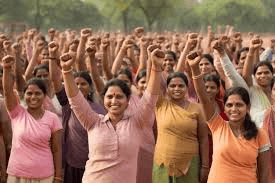
Why in News?
The International Labour Organisation (ILO) has recently spotlighted the significant challenges surrounding the low participation of women in India's labor force. This trend is mainly attributed to the extensive caregiving responsibilities that fall on women. The report titled "The Impact of Care Responsibilities on Women’s Labour Participation" emphasizes that investments in early childhood care and education (ECCE) are crucial for promoting gender equality within the workforce.
Current Statistics on Women's Labour Force Participation in India
- High percentage outside workforce: More than half of India's women (53%) are not part of the labor force, primarily due to unpaid caregiving obligations, in stark contrast to a mere 1.1% of men.
- Unpaid domestic and household work: The Periodic Labour Force Survey (PLFS) for 2023-24 reveals that around 36.7% of females and 19.4% of the overall workforce engage in unpaid household chores.
- Gender disparities in domestic work: According to the National Statistical Office (NSO) Time Use Survey 2019, 81% of Indian females aged 6 and older spend more than five hours each day on unpaid domestic tasks.
- Caregiving time differences: Among individuals aged 6 and above, 26.2% of females dedicate over two hours daily to caregiving, compared to 12.4% of males, illustrating the unequal burden faced by women.
Global Perspectives on Care Responsibilities and Workforce Participation
- Global findings: In 2023, 748 million individuals worldwide were excluded from the labor force due to caregiving duties, with a staggering 708 million of them being women, highlighting a persistent gender imbalance in care responsibilities.
- Regional insights: Northern Africa, Arab states, and the Asia-Pacific region report the highest rates of women outside the labor force due to caregiving, reflecting cultural and structural caregiving expectations globally.
- Comparative analysis: India, along with countries like Iran, Egypt, and Jordan, exhibits a high proportion of women constrained by caregiving responsibilities.
- Countries with high female workforce participation: Nations such as Belarus, Bulgaria, and Sweden have managed to keep the share of women outside the workforce below 10% by investing approximately 1% of their GDP into ECCE initiatives.
Key Barriers to Women’s Workforce Inclusion and Way Ahead
- Barriers: The ILO report identifies low educational attainment, limited job opportunities, and inadequate infrastructure as significant barriers preventing women's participation in the workforce. Cultural norms surrounding caregiving further hinder women's access to labor markets, particularly in rural areas, perpetuating existing gender inequalities.
- Way ahead: To combat the high percentage of women outside India's labor market due to caregiving responsibilities, there is an urgent need for substantial investments in the care economy, particularly in ECCE. Such initiatives not only have the potential to promote gender equality but also unlock economic opportunities by facilitating the entry and success of more women in the workforce.
GS3/Environment
Kodo millet
Source: Indian Express

Why in news?
Recently, the Principal Chief Conservator of Forests (Wildlife) indicated that the deaths of elephants in Bandhavgarh Tiger Reserve may be linked to “mycotoxins associated with kodo millet.”
About Kodo millet:
- Kodo millet, scientifically referred to as Paspalum scrobiculatum, is known as Kodra and Varagu in various regions of India.
- This crop is recognized as one of the most robust, with capabilities such as drought resistance, high yield potential, and excellent storage properties.
- It is an important staple for many tribal communities and economically disadvantaged groups in India.
Required climatic conditions:
- Kodo millet thrives best in tropical and subtropical climates.
- The crop is cultivated in poor soil conditions and is widely found in arid and semi-arid regions.
- Research suggests that the origin of Kodo millet is in India, with Madhya Pradesh (MP) being one of the largest producers as of a 2020 study.
- Besides MP, this millet is also grown in Gujarat, Karnataka, Chhattisgarh, and parts of Tamil Nadu.
- Kodo millet is cultivated not just in India, but also in countries such as Pakistan, the Philippines, Indonesia, Vietnam, Thailand, and parts of West Africa.
Mycotoxins and Health Risks:
- A significant mycotoxin associated with kodo millet is Cyclopiazonic acid (CPA), which has been linked to kodo poisoning since it was identified in the mid-1980s.
- Kodo poisoning primarily occurs from the consumption of kodo grains that have been affected by rainfall during maturation and harvesting, leading to fungal infections. This contaminated millet is locally referred to as 'Matawna Kodoo' or 'Matona Kodo' in northern India.
- The effects of kodo poisoning are severe, impacting the nervous and cardiovascular systems. The main symptoms include vomiting, dizziness, loss of consciousness, rapid and weak pulse, cold extremities, and tremors.
|
44 videos|5362 docs|1133 tests
|





















